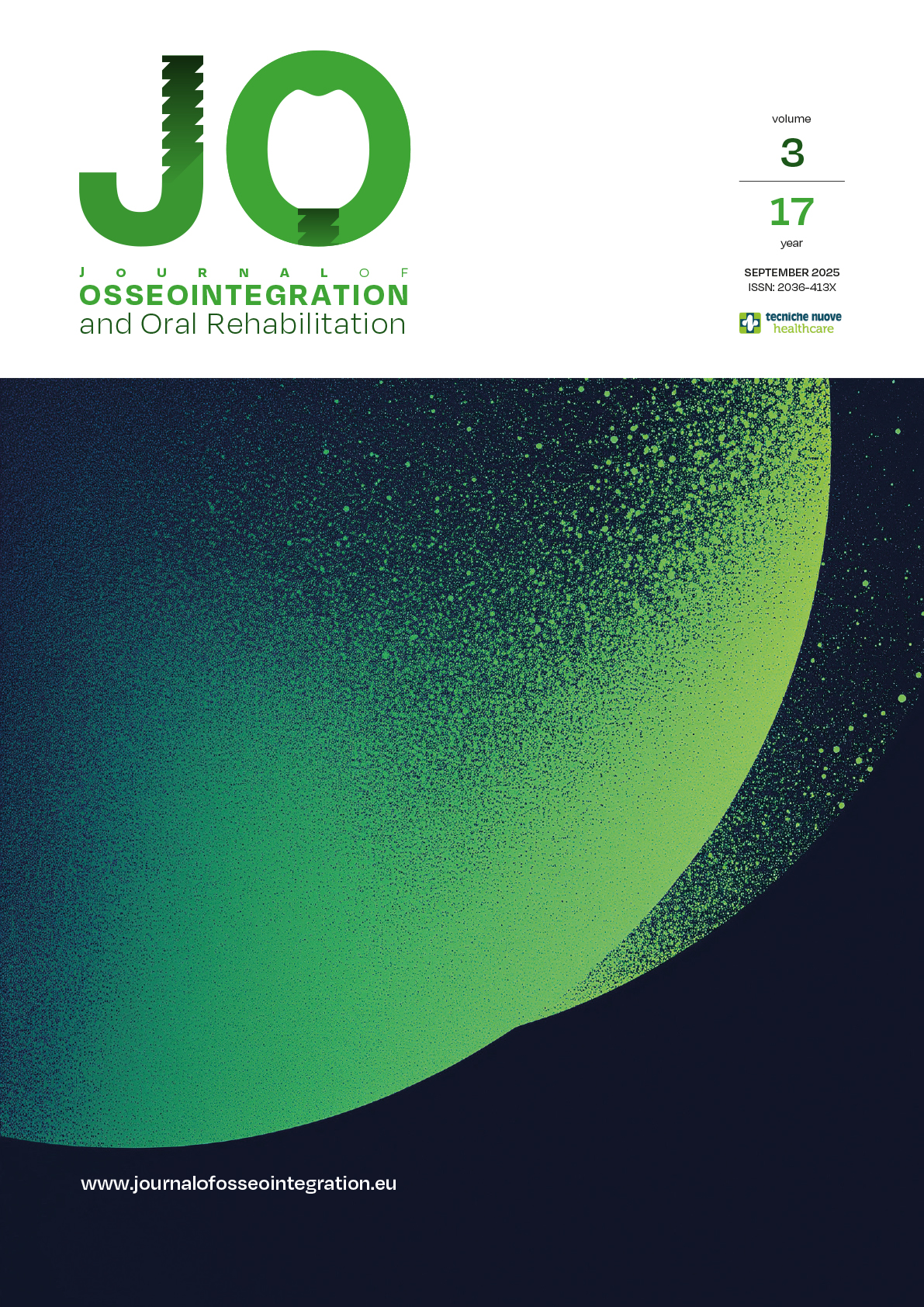Articles
Vol. 17 No. 3 (2025)
Oxidant And Antioxidant Status Of Peri-Implant Crevicular Fluid In Patients With Sandblasted Acid-Etched And Anodized Dental Implants: A Prospective Clinical Study
Oxidant and antioxidant status among patients with diverse surface treated dental implants
Publisher's note
All claims expressed in this article are solely those of the authors and do not necessarily represent those of their affiliated organizations, or those of the publisher, the editors and the reviewers. Any product that may be evaluated in this article or claim that may be made by its manufacturer is not guaranteed or endorsed by the publisher.
All claims expressed in this article are solely those of the authors and do not necessarily represent those of their affiliated organizations, or those of the publisher, the editors and the reviewers. Any product that may be evaluated in this article or claim that may be made by its manufacturer is not guaranteed or endorsed by the publisher.
Received: 1 August 2024
Accepted: 8 September 2025
Accepted: 8 September 2025
59
Views
47
Downloads












